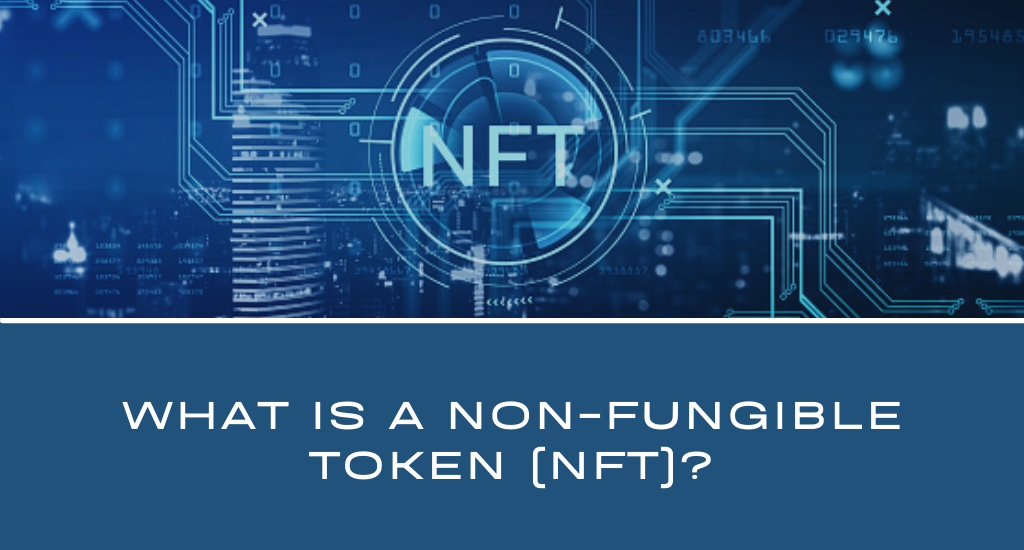What is a Non-Fungible Token (NFT)?
- January 21, 2022
- Posted by: mbipuser
- Category: Latest article

A picture is worth a thousand words, but what is the value of an art collage in US dollars? In the case of Mike Winkelmann, also known as Beeple, the answer is shockingly high: 69 million USD. Winkelmann’s collage was digitized and packaged as an NFT, then sold at auction. Many similar examples of digital art pieces have been in the news lately, from moving pictures of cartoon cats to tweets by well-known individuals. NFTs have become big money overnight, with celebrities, business moguls, tech experts, and even ordinary people getting swept up in the hype.
So what is an NFT and why all the hype? In this first article of a two-part series, we will discuss what NFTs are and why they matter. In the second article, we will talk about how NFTs can be protected via patents and how to think about NFT-related inventions. We also had a popular NFT presentation last month (slides available here).
A non-fungible token, abbreviated as “NFT,” is a unique digital asset that can be “owned” in a more real sense than other forms of data. Typical examples of digital assets that can be tokenized into NFTs include text, images, videos, audio, and other forms of media content. For example, the Beeple collage mentioned above is a digital image depicting the collage where ownership of the digital image was assigned to the buyer.
Let’s break down the term further. An NFT is both a “token” and “non-fungible.” What do these mean? A token in the computer context can have different meanings, but generally it is referring to a specific portion of data. An item that is non-fungible is unique, i.e., it is not equivalent to other items of the same type. In contrast, a fungible item is interchangeable with other items of the same type- think a dollar bill, which for most purposes is effectively the same as any other dollar bill. A hand-painted artwork, on the other hand, is a unique item that is not interchangeable with other pieces of art.
The next question you may have is: so what? I can go find an image of the Beeple collage online, download it to my computer, and now I “own” it, right? Not exactly, or at least not in the way that NFTs let you “own ” digital items like the Beeple collage. The key underlying technology that has prompted the new wave of NFT is another big buzzword these days: blockchain.
We covered blockchain in more detail in a previous presentation (slides available here), but for this article here is a quick recap. Blockchain is a decentralized digital ledger used to transactions and track assets. This is the underlying technology utilized by most cryptocurrencies like Bitcoin and Ethereum, but it can be used much more widely for all sorts of other tangible and intangible assets as well. Data representing transactions (like sales of NFTs) are recorded on a blockchain, which is then distributed among many computers.
A typical blockchain is decentralized in the sense that no single entity controls all of the computers. Because the ledger is spread out among many computers, one actor cannot alter the ledger without consensus that the altered ledger is correct. This inability to alter the ledger without consensus ensures that prior transactions are immutable and are not changed. For example, this prevents a bad actor from stealing by changing their copy of the blockchain to say that they own the stolen item.
What do blockchains have to do with NFTs? Blockchains are how sales of NFTs are tracked and are used to ensure that NFTs cannot be easily stolen by altering the records. Because blockchains are used for recording transactions involving both NFTs and cryptocurrencies, many NFT platforms use cryptocurrency like Bitcoin or Ethereum to allow customers to purchase NFTs. Since blockchains can keep a complete, unalterable record of all sales of an NFT, the blockchain can also be used as proof of authenticity if they include data proving who the original seller is.
One of the more unique features about NFTs are their inherent digital scarcity, which can be controlled by the producer. This digital scarcity is the concept that a limited number of any given NFT exist, and the NFT cannot simply be copied like other data without permission by the NFT provider. This is what ensures that NFTs can remain non-fungible and retain value as compared to other kinds of data. Other advantages of NFTs include ease of proving authenticity, facilitating direct connections between buyers and sellers, and the ability to access unique assets anywhere, anytime.
Even having said all that, you might reasonably feel that this is still not a big deal. After all, even if the Beeple collage I own is unique, you can still just download the picture online. In this regard, NFTs can provide two things that add value: collectability, and exclusive access. NFTs can be collected like any physical assets, and is similar to how people find value in baseball cards or other physical items without much utilitarian value. Also, NFTs can allow users to exclusively access content, for example, watching a video that is not widely available. Moreover, NFTs can be traded or sold like any physical good, so owners can exchange an NFT for something they want.
Beyond the interesting ownership access, NFTs are notable for sellers because they provide new ways to control and monetize use of the digital assets via smart contracts. A smart contract is a computer program stored on a blockchain that sets certain conditions related to blockchain transactions and assets transferred via blockchain transactions. A smart contract can be used, for example, to limit sharing of a digital asset or provide a royalty when an NFT is sold or accessed. This control and monetization open up new avenues of revenue for content creators as well as ways to implement digital rights management for their content.
Taken together, all of the benefits mentioned above make NFTs an attractive option for content creators like artists, musicians, authors, and directors, as well as companies that employ these people. But NFTs also have some issues and challenges.
In terms of security, NFTs can’t be easily stolen by changing the blockchain because the blockchain is stored on multiple different computers where it cannot be retroactively altered, and the state of the blockchain must be verified before new transactions can be added. However, it is still possible to hack into NFT accounts or other data used to access NFTs in order to gain control of the assets. Further, once the hacked NFT account has authorized a transaction and the transaction is recorded on the blockchain, the transfer of the NFT cannot be undone. With the high value of some NFTs, this loss could be devastating.
Also, like when buying physical art pieces such as paintings or photographs, buying an NFT of a creative work does not mean that the NFT buyer owns the intellectual property over the work. This has caused much confusion among the general public about exactly what rights an NFT grants. Generally speaking, most current NFT sales only provide the ability to view and sell the digital asset, or maybe give some limited ability to share the digital asset, but do not grant any intellectual property rights in the underlying work.
Additionally, due to the ease of selling NFTs and anonymous nature of most blockchains, fraudulent sellers can create and sell counterfeit NFTs without the originator’s consent. These counterfeits may not have any proof of authenticity, but could fool a less sophisticated buyer and present risks of devaluing authentic NFTs of the same content. As NFTs aren’t currently regulated in many countries, they can drastically fluctuate in value without a safety net, and in the example above could become worthless almost instantly. This has caused some concern of the NFT hype being a bubble.
In addition to the monetary risks, using blockchains currently consumes a lot of computer resources. This causes additional environmental concerns due to the energy needed to process blockchain transactions. There are new techniques being developed to mitigate this issue by removing the “proof of work” needed to confirm the state of blockchain which are expected to simplify the computing process used to add transaction data, but in the meantime NFT solutions recorded on the blockchain raise potential issues related to impact on the environment. It is therefore currently unclear as to how sustainable NFT platforms will be.
Having gone over the basics of what NFTs are and how they work, our next topic will be about how you might be able to use patents to protect your NFT-related inventions. Check in next month for the next article in this series to find out more.
